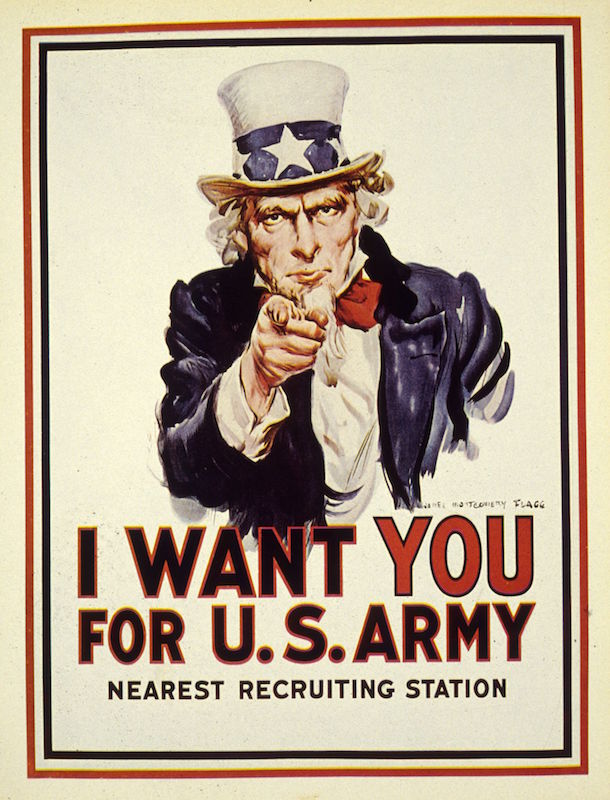Armstrong, Helen. Graphic Design Theory: Readings From the Field pgs 19-31, Princeton Architectural Press, 2009.
Mass communication has vastly influenced society in ambiguous ways. One way in which we see this is propaganda. We witness this in both positive and negative fashion, particularly during the ages of the world wars. For example, James Montgomery Flagg’s 1916, I Want You, was a poster created for those who were interested in fighting in wars for the United States of America. Overtime, this medium grew into a popular ad campaign and became the country’s official army recruitment poster for over 100 years. We can all agree that this poster has mostly positively influenced the progression of the brand American is (still) looking for.

Posters are just one medium, though. Mass communication can take form in practically all media, if appealed correctly. Billboards, newspapers, magazines, books, television, are just a few others. More recently, we’ve witnessed the growth of the internet and social media. With everyone trying to adjust to this incredibly mass medium, we see presidents making announcements on Twitter, TED Talks done through zoom, and Queen Elizabeth’s funeral on YouTube. The ease of access in our daily lives to mass media makes us overlook how significant of an influence it has over us as a humanity.
One of the oldest forms of mass communication is a manifesto. A manifesto is a written statement proclaiming publicly the intentions, motives, or views of its issuer. One example of a manifesto would be the ever-so-historic Ten Commandments. In that document, there is a numbered list of beliefs that God created for the Israelites, which soon became a set of rules for all of humanity. It’s short but straight to the point.
Aleksandr Rodchenko, in his Manifesto of the Constructivist Group, made it known that technology would be the ultimate rival of art. But now we, in the present day, understand that art evolves with technology (and all forms of such). El Lissitzky, a prominent figure of the Russian avant-garde and major influence of the Bauhaus, sort of highlights that.
Similar to the Ten Commandments, we see F.T. Marinetti include a list of numbered tenets, creating a sense of direction of his views. One can surmise that his provocative views on politics and roles in society could also be directly linked to his character; a showman, a scoundrel, and a fascist, but a prominent futurist in world history.
In his Manifesto of Futurism, Marinetti mentioned:
- “9. We will glorify war—the world’s only hygiene—militarism, patriotism, the destructive gesture of freedom-bringers, beautiful ideas worth dying for, and scorn for woman.
- 10. We will destroy the museums, libraries, academies of every kind, will fight moralism, feminism, every opportunistic or utilitarian cowardice.”
These views would simply get Marinetti ‘canceled’ in today’s society for justifying war and shaming women.
Citations:
Knauer, Kelly. “World War I Anniversary: Story Behind the Uncle Sam Poster.” Time, Time, 6 Apr. 2017, https://time.com/4725856/uncle-sam-poster-history/.




Leave a Reply